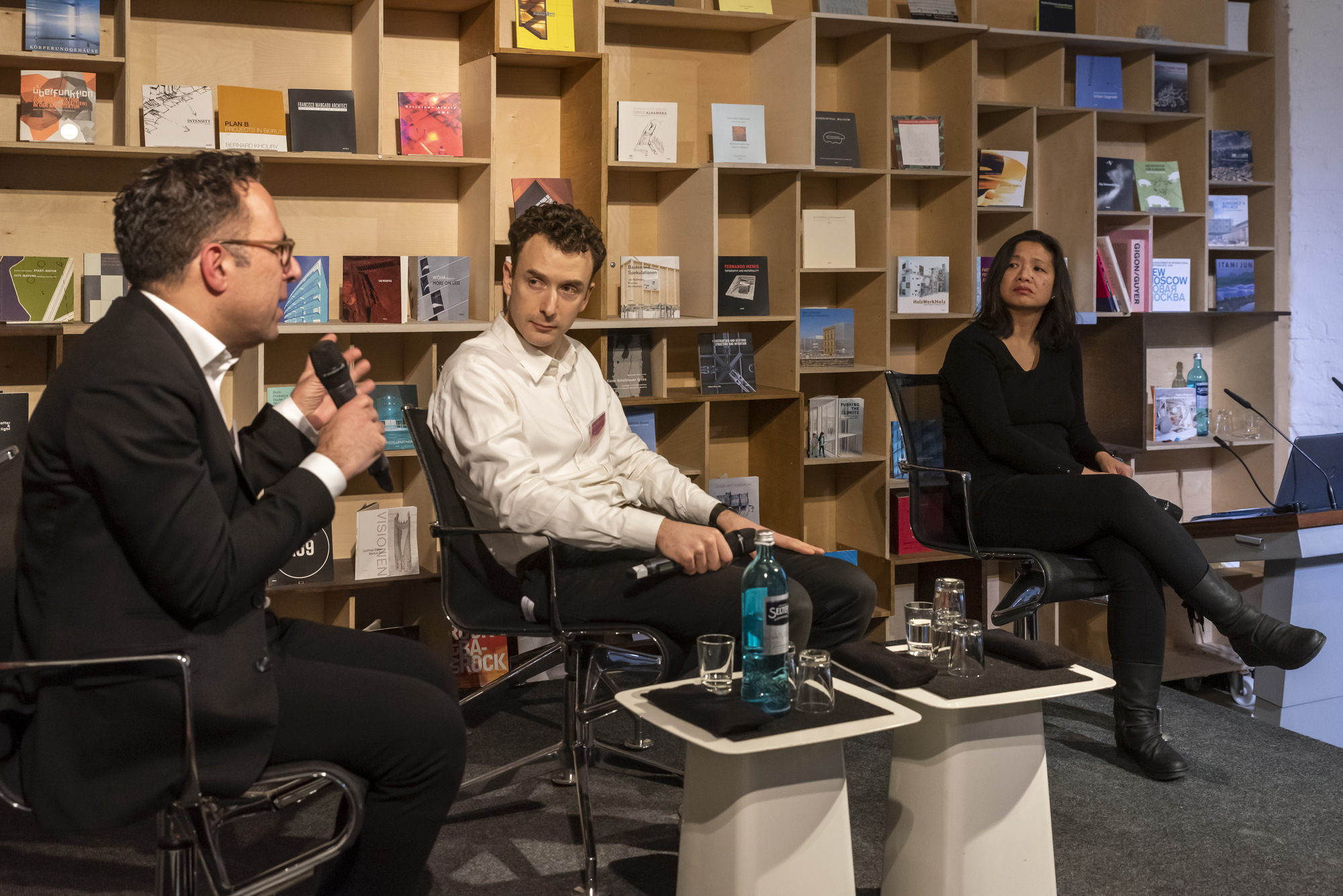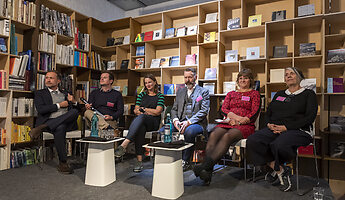In collaboration with ANCB The Aedes Metropolitan Library, the Lab Talk Series “Towards a Healthy City” kicked off with the pilot event The Urban Approach in September 2019, which highlighted the importance of communicative spaces and citizen participation, in addition to the value of inclusive green spaces.
To broaden the discussion on the theme of health on different levels of city-making, the second lab talk focused on health and well-being at the scale of the building, as we spend the vast majority of our time indoors. Having said that, how can architecture promote health on both a physical and mental level? How may architects and planners responsibly use user data insights to build sustainably?
In collaboration with ANCB, we invited Karen Lee (Associate Professor of Public Health & Preventive Medicine, University of Alberta and author of the book Fit Cities, Edmonton), Trevor Keeling (Associate, BuroHappold Engineering, London) and Mazda Adli (Psychiatrist and Stress Researcher, Fliedner Clinic / Charité Berlin) to share their current work and insights on how the built environment can produce and optimize health. The lectures were followed by a discussion with the peers Christiane Sauer (Professor for Material and Design, Weißensee Academy of Art, Berlin), Ariane Stracke (Senior Architect / Associate, UNStudio) and Jeff Povlo (Managing Director of SCAPE, Amsterdam).
Dr. Karen Lee began with an introduction on how health can be improved through considered building siting and design. As we spend most of our time indoors nowadays, even more so during volatile times, buildings are essential to improving general health and well-being. In addition to maintaining active routines and healthy diets, Lee highlights the importance of both the social and physical environments in impacting our physical, mental, and social health. Lee’s research calls for us to create vibrant pedestrian realms and further activate community environments. Lastly, Lee presented insights from her book Fit Cities: My Quest to Improve the World's Health and Wellness, where she explores a new design framework for architects to use as they design for active occupants.
“In a world where we are more and more connected, why do we feel lonely? And what’s the workplace got to do with it?”
Trevor Keeling discussed the issue of loneliness, particularly in the workplace. He presented workplace loneliness as the consequence of extensive time spent in offices, describing office environments as “unnatural places” where even when many people are close together in the same room, they do not speak to each other for hours. For Keeling, tackling loneliness goes beyond mere social interactions; it is about forming communities where one builds trust and shares affinities with others. Keeling presented the findings from the collaborative project with Lendlease and Collectively, the “Loneliness Lab”, which extensively studied loneliness in homes and workplaces. In the process, he identified several key factors that trigger loneliness, including our transition points in life–moving from one city to another, one stage of life to another…as these points in time shake up our social spheres, people are more likely to experience loneliness. Keeling concludes that loneliness continues to prevail even in our increasingly connected world due to increased mobility, which inevitably creates more transition points.
What makes us more sensible and vulnerable to stress? Do cities drive us crazy?
To answer these questions, Prof. Dr. med. Mazda Adli looks into the relationship between well-being and city dwelling. He found that, the larger the city, the higher the risk for major psychological disorders (such as schizophrenia, depression, and anxiety disorders) as an adult, and the more formative years spent in the city, the greater the risk of suffering from said diseases. In response to the intensity and complexity of urban environments, Adli’s research points out that our brains’cognitive abilities are not, in fact, optimally designed to live in dense metropolises. Given that global urbanization will remain prevalent in the coming decades, Adli argues that it will have an impact on our health comparable in scale to that of climate change.
Adli presented his work on specific reactions of the human brain in response to urban living. Along with the German Federal Environmental Office, he found a direct correlation between the percentage of green spaces in an urban environment and the stress resilience of the brain. Adli concluded that cities themselves do not cause mental problems; rather, it is urban living that affects the way we perceive stress, in turn further impacting individuals who are already at risk. With that in mind, he proposed several preventive measures to promote mental well-being through preventing social isolation in cities, namely done by minimizing the experience of uncontrollable social density and developing more urban green spaces. Lastly, Adli emphasizes the importance of consolidating an urban mental health strategy, where he draws to work of the interdisciplinary forum for Neuro-Urbanism in Berlin.
The lectures were followed by a panel discussion.
Christiane Sauer, Ariane Stracke, and Jeff Povlo joined the first half of the panel discussion, where they touched upon questions involving the role of noise in cities, loneliness in the public realm, the configuration of urban open spaces, and the importance of activated ground floor spaces.
The second half of the panel discussion was opened to the floor, where discussions pertaining to design implications of Keeling and Adli’s researches came to the fore, as did an exploration of the roles of technology and inclusive spatial design in working toward reducing stress and the prospects of human-scale design in urban landscapes.


